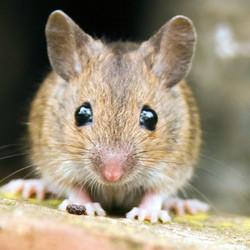There are quite a few rodents in the world. There are water-dwelling, dam-building rodents, like the beaver. There are ground-dwelling, plant-damaging rodents, like the gopher. These rodents have strong teeth that are able to make quick work of the wood in your home. Fortunately, they have no interest in getting into your home and infesting it. They prefer living in the water or in the ground. But there are three types of rodents that can get into your home, and two of them actually prefer to live with you. Let's start our guide by talking about these unique rodent pests.
Know Your Enemy
Can you guess which three rodents get into your home? If your guess is mice, rats, and squirrels, you're right on the money. Can you guess which of these three will live with you but not prefer it? If your answer is squirrels, you're mostly right. This is a trick question. There are some species of mice and rats that don't prefer to live with you. Deer mice prefer to live outdoors and are likely to only infest barns, sheds, and outbuildings. Norway rats are rats that create burrows underground. While you can have a Norway rat infestation, it is more likely that this species will go in and out of your home rather than stay inside permanently. The two species to be most concerned about are house mice (also known as field mice) and roof rats (often referred to as black rats). These two get in and stay in.
Detection
The first step in rodent control is learning how to detect rodent activity. While it is possible to hear mice and rats in your walls or attic spaces, these animals can live in your home without making any noise. When they do, they can expose you to illness, damage your belongings, and present a serious threat to your home. Use these tips to find evidence of rodent activity.
- Droppings: Mice and rats leave tiny black droppings everywhere. These will be found in dark, secluded spots. If you go into your attic with a flashlight, you may see these scattered all over. You may find them behind appliances in your kitchen or laundry room. You may find them in cabinets under sinks. You may find them behind your stored foods.
- Urine: Mice and rats mark their territory by dribbling urine as they explore. The scent of urine can be a strong indication of an infestation.
- Holes: Mice and rats make holes in your exterior. They make holes in building materials, such as baseboards, molding, sheetrock, etc. They make holes in stored furniture, boxes, and other items. They make holes in food packages. If you're seeing holes, you probably have a rodent infestation.
- Nests: Mice and rats can make nests with soft materials gathered from your home. These nests can be tucked in recesses of your attic, drop-down ceilings, recesses in your boiler room, and in wall voids.
Rodent Control
These suggestions will help you manage rodents, reduce the impact of illness, and help you exclude them from your home.
- Seal entry points in your exterior.
- Remove objects away from your exterior walls.
- Reduce vegetation in your landscaping.
- Trim tree branches away from your roofline and exterior walls.
- Address conditions that cause puddles.
- Push wire mesh in your downspouts.
- Reduce bugs around your home.
- Move bird feeders away from your exterior.
- Keep your interior clean of food particles and juice spills.
- Keep your pantry foods in sealed containers.
Get Help When You Need It
If you detect rodents in or around your home, remember that American Pest Solutions offers industry-leading rodent control in Western Massachusetts. We can get rodents out of your home and keep them out. Connect with us today. We're here to help.

